What is the Dunning-Kruger effect? Learn how this psychological phenomenon impacts our lives, from personal...
Comprehensive Nutritional Strategies to Manage Heat Stress in Dairy Cows
Comprehensive Nutritional Strategies for Managing Heat Stress in Dairy Cows: From Physiology to Ration Formulation
Introduction
Heat stress, as one of the most complex and costly environmental challenges in the global dairy industry, is increasingly becoming a major concern for farmers and specialists. Due to global warming trends and, notably, significant successes in dairy cow breeding that have led to increased milk production potential, the sensitivity of these animals to heat stress has sharply increased. High-producing cows generate more internal heat due to higher feed intake and a severe metabolic rate, making them more vulnerable to increases in ambient temperature.
The economic consequences of heat stress are extensive and significant. These losses are not limited to a direct drop in milk production but also include reduced milk quality, a severe decline in reproductive performance, an increased incidence of metabolic diseases, and a weakened immune system, which collectively severely impact the herd's profitability. Estimates from the U.S. livestock industry put the annual losses from heat stress in the hundreds of millions of dollars, indicating the vast scale of this problem.
The purpose of this report is to provide a comprehensive and in-depth analysis of nutritional interventions to combat heat stress. With a scientific yet practical approach, this report first explains the physiological basis and the cascade of negative consequences resulting from heat stress. Then, by focusing on the changes in the animal's nutritional requirements under these conditions, it presents integrated and advanced strategies in ration formulation, from adjusting major nutrients to the targeted application of feed additives, to provide an effective tool for specialists in the industry to minimize the detrimental effects of this challenge.
Section 1: Physiology and Consequences of Heat Stress
1-1. Defining Heat Stress: The Heat Balance Equation in the Animal's Body
Heat stress, in its most fundamental definition, is a condition where the total heat load imposed on an animal exceeds its physiological capacity to dissipate heat. This imbalance in the body's heat equation forces the animal to activate a series of complex physiological and behavioral responses to maintain its core body temperature within the normal range and return to thermal homeostasis.
Two main sources of heat affect the cow's body:
- Environmental Heat: This includes air temperature, relative humidity, wind speed, and the amount of direct solar radiation.
- Metabolic Heat: This heat is produced inside the animal's body as a result of the digestion, absorption, and metabolism of nutrients. Fermentation processes in the rumen, especially the digestion of plant fibers, are one of the main sources of internal heat production in ruminants.
When the ambient temperature exceeds the cow's thermoneutral zone (typically considered to be between 4 to 24 degrees Celsius), these two heat sources combine and impose a heavy heat load on the animal.
1-2. Key Indicators: Understanding the Temperature-Humidity Index (THI) and Its Limitations
To quantify the severity of environmental stress, various indices are used, the most common of which is the Temperature-Humidity Index (THI). This index considers the combined effect of temperature and relative humidity, which are the two main factors in creating heat stress. In the past, a THI threshold of 72 was considered the point at which the performance of dairy cows begins to decline. However, more recent studies, taking into account the higher production potential of modern cows, show that this threshold has been lowered to THI=68. This means that today's high-producing cows experience stress under milder environmental conditions.
Despite its widespread use, the THI has limitations. This index does not account for other important factors such as air velocity and direct solar radiation. For this reason, monitoring the animal's own physiological indicators, such as respiration rate, is a more accurate and sensitive tool for the early detection of stress.
1-3. Physiological and Behavioral Responses of the Animal to Heat Load
Cows employ a series of behavioral and physiological adaptations to cope with the extra heat load:
- Behavioral Responses (First Line of Defense): Cows reduce their feed intake, seek shade and water sources, increase their standing time to expose more of their body surface to airflow, and avoid unnecessary physical activities.
- Physiological Responses (Second Line of Defense): These include increased respiration rate (panting), increased sweating (which leads to water and electrolyte loss), and redistribution of blood flow from internal organs to the skin to facilitate heat dissipation.
1-4. The Cascade of Negative Effects: Impact on Feed Intake, Milk Production, Fertility, and General Health
If the heat load exceeds the capacity of these defense mechanisms, a cascade of negative consequences for the animal's performance and health begins:
Reduced Dry Matter Intake (DMI): As an adaptive response to reduce metabolic heat production, cows instinctively eat less. This reduction can be between 8 to 12% or even more.
Reduced Milk Production and Quality: The decrease in DMI directly leads to a shortage of energy and nutrients for milk synthesis, severely reducing milk production.
Impaired Reproductive Performance: Heat stress is one of the main causes of seasonal infertility and negatively affects oocyte quality, embryo viability, and the intensity of estrus signs.
Increased Risk of Metabolic Diseases: Behaviors like feed sorting and reduced saliva production increase the risk of Subacute Ruminal Acidosis (SARA). Simultaneously, severe panting can lead to respiratory alkalosis, which depletes the body's buffering reserves.
This set of responses shows that heat stress is a "negative physiological cascade." The animal's initial adaptive response (reducing feed intake) itself becomes a metabolic stressor. This situation compromises rumen health, reproductive function, and the immune system simultaneously and in a complex manner.
| THI Level | Stress Category | Rectal Temp (°C) | Respiration Rate (breaths/min) | Estimated DMI Reduction (%) | Estimated Milk Yield Reduction (kg/day) |
|---|---|---|---|---|---|
| Less than 68 | No Stress | 38.0-38.5 | Less than 60 | 0 | 0 |
| 68-71 | Mild Stress | 38.5-39.0 | 60-70 | 3-5 | 1.0-1.5 |
| 72-79 | Moderate Stress | 39.0-40.0 | 70-100 (Panting) | 8-12 | 2.5-4.0 |
| 80-89 | Severe Stress | 40.0-41.0 | Over 100 (Open mouth) | Over 12 | Over 4.5 |
| Over 90 | Danger of Death | Over 41.0 | Very high, shallow breathing | Severe | Severe |
Section 2: Revisiting Nutritional Requirements Under Heat Stress
2-1. Water: The Most Critical Nutrient
Under heat stress conditions, water becomes the most critical nutrient. Water requirements increase by 1.2 to 2 times due to increased loss through respiration and sweating. A high-producing cow in hot conditions can consume more than 130 liters of water per day. Therefore, providing clean, fresh, and appropriately tempered water (21 to 26°C) is vital.
2-2. The Energy Puzzle: Meeting Increased Needs with Reduced Feed Intake
Heat stress creates a metabolic puzzle: the animal's maintenance energy requirement to cool its body increases by 10 to 30 percent, while its energy intake from feed decreases. Therefore, increasing the energy density of the ration is a key strategy.
2-3. Fiber Management: Balancing Rumen Health and Heat of Fermentation
Fiber fermentation produces the most metabolic heat. The solution to this paradox lies in shifting the focus from "fiber quantity" to "fiber quality." The optimal strategy includes reducing low-quality fiber and using highly digestible forage (like BMR corn silage) and non-forage fiber sources (like soy hulls).
2-4. Managing Protein and Amino Acids for a Stressed Rumen
During heat stress, microbial protein synthesis in the rumen decreases. To compensate, high-quality rumen-undegradable protein (RUP) sources should be used, and excess crude protein (usually above 18%), which is energy-intensive to metabolize, should be avoided.
2-5. Replenishing Electrolytes and Minerals (Potassium, Sodium, Magnesium)
Intense sweating leads to electrolyte loss. The ration should be enriched with higher levels of potassium (1.5-1.8%), sodium (0.5-0.6%), and magnesium (0.35-0.40%) to compensate for these losses.
2-6. The Role of Vitamins and Antioxidants in Combating Oxidative Stress
Heat stress causes oxidative stress. Strengthening the body's antioxidant defense system through supplementation with Vitamin E, selenium, and other vitamins (like Vitamin C and niacin) is essential.
| Nutrient | Level in Normal Conditions | Level in Heat Stress | Key Reasons for Change |
|---|---|---|---|
| Net Energy for Lactation (NEL) | Proportional to production | Increase energy density | Compensate for reduced DMI and increased maintenance needs |
| Fiber (NDF) | 28-32% | 28-30% (high quality) | Reduce heat of fermentation, maintain rumen health |
| Crude Protein (CP) | 16-17% | 17-18% | Compensate for reduced microbial protein synthesis |
| Rumen-Undegradable Protein (RUP) | 35-38% of CP | 38-42% of CP | Direct supply of amino acids to the intestine |
| Potassium (K) | 1.0-1.2% | 1.5-1.8% | Compensate for losses from sweat and urine |
| Sodium (Na) | 0.35-0.45% | 0.5-0.6% | Compensate for electrolyte loss, buffering role |
Section 3: Advanced Ration Formulation Strategies
3-1. Increasing Energy Density: Strategic Use of Rumen-Protected Fats
Using rumen-protected fats is the best way to increase the energy density of the ration. These fats are considered a "cool" energy source because their digestion and metabolism produce much less heat than carbohydrates and proteins.
3-2. Optimizing Forage Quality and Fiber (NDF) Digestibility
Using forages like BMR (Brown Midrib) hybrid corn silage, which has lower lignin and higher fiber digestibility, is a very effective strategy. These forages are digested faster and make more energy available to the animal with less heat production.
3-3. Adjusting Dietary Cation-Anion Difference (DCAD) for Lactating Cows
Increasing the ration's DCAD to high positive values (over +350 mEq/kg of dry matter) by adding cationic sources like sodium bicarbonate and potassium carbonate helps combat metabolic acidosis and can improve feed intake and milk production.
Section 4: Targeted Application of Feed Additives
Feed additives are precision tools that can be used to target and strengthen specific physiological mechanisms affected by heat stress.
4-1. Buffers and Alkalizing Agents
Compounds like sodium bicarbonate (baking soda) and potassium carbonate are the first line of defense against ruminal acidosis. They stabilize rumen pH and help replenish lost electrolytes.
4-2. Yeasts, Probiotics, and Rumen Modifiers
Live yeasts (especially Saccharomyces cerevisiae strains) help maintain the anaerobic environment necessary for fiber-digesting bacteria by consuming oxygen in the rumen, leading to pH stabilization and improved digestion.
4-3. Antioxidants and Osmolytes (Betaine)
Organic selenium and Vitamin E prevent oxidative damage by neutralizing free radicals. Betaine, as an osmolyte, helps cells maintain their water and volume under stress conditions and improves the integrity of the gut wall.
4-4. Specialty Supplements (Niacin, Chromium, Protected Choline)
Niacin helps with heat dissipation by increasing vasodilation of skin blood vessels. Chromium helps with better energy management by improving insulin sensitivity. Protected choline prevents fat accumulation in the liver and helps prevent fatty liver disease.
| Additive | Category | Suggested Dose (g/head/day) | Main Mechanism of Action |
|---|---|---|---|
| Sodium Bicarbonate | Buffer | 114 - 227 | Stabilize rumen pH, replenish blood bicarbonate |
| Live Yeast (S. cerevisiae) | Probiotic/Rumen Modifier | As per manufacturer's recommendation | Oxygen scavenging, pH stabilization, improved fiber digestion |
| Organic Selenium | Antioxidant | 0.3 ppm in dry matter | Key component of antioxidant enzymes |
| Vitamin E | Antioxidant | 1000-2000 IU | Protects cell membranes from oxidation |
| Niacin (Vitamin B3) | Vitamin/Metabolic | 6 | Increases cutaneous vasodilation and heat dissipation |
Section 5: Practical Feed and Feeding Management
5-1. Optimizing Timing and Increasing Feeding Frequency
Cows naturally prefer to eat during the cooler hours of the day. Shifting a major portion of feeding (e.g., 60-70 percent) to the evening, night, and early morning hours encourages total dry matter intake. Also, dividing the ration into smaller meals (4 to 6 meals) maintains feed freshness and helps stabilize rumen pH.
5-2. Managing the Total Mixed Ration (TMR) to Maintain Freshness and Prevent Sorting
The Total Mixed Ration (TMR) can quickly undergo secondary fermentation and heat up in hot weather. Meticulous bunk management, including daily cleaning and frequent feed push-ups, is vital. To reduce feed sorting, the moisture content of the TMR should be brought to around 50 percent.
5-3. Integrating Nutritional Strategies with Environmental Management
Nutritional solutions alone cannot work miracles. The effectiveness of these strategies is maximized when they are employed alongside efficient management practices for physically cooling the animals, such as providing shade, using high-speed fans, and sprinkler or mister systems.
Section 6: Conclusion and Strategic Recommendations
Heat stress is a multifaceted challenge that requires an integrated and intelligent management approach. Success is the result of synergy between different measures in the areas of physiology, nutrition, environmental management, and feeding. The key points of nutritional intervention are summarized as:
- Compensating for Reduced Feed Intake: By increasing the energy density of the ration with protected fat sources.
- Managing Fermentation Heat: By using higher quality forages and digestible fibers.
- Maintaining Rumen Health: By using buffers, yeast, and rumen modifiers.
- Replenishing Physiological Losses: By providing higher levels of water, electrolytes, and antioxidants.
- Optimizing Feeding Management: By increasing feeding frequency during cooler times of the day.
A comprehensive approach applies these strategies in a cohesive program, complemented by effective management actions to cool the animal's physical environment.
References
- Heat Stress and its Control Management in Dairy Cattle
- Effects of Heat Stress in Dairy Cows - Extension (Professional) - Damestic
- Metabolic Adaptation of High-Producing Dairy Cows under Heat Stress Conditions - SID
- Article on the Effect of Heat Stress on Dairy Cows - Civilica
Leave a comment
Log in to post comments
Related posts
 Why does pollen improve your health?
Why does pollen improve your health? 10 Ways to Consume Bee Pollen
10 Ways to Consume Bee Pollen
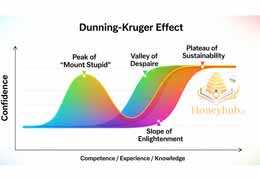






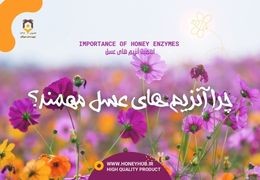


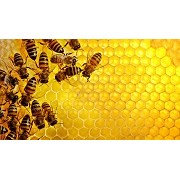


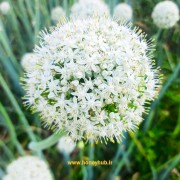

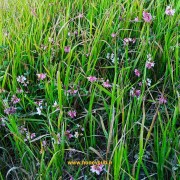



Latest comments